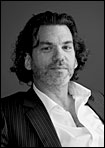Continuing the thread of thought in our art-science session at the SLSA meeting in Berlin in early June, I’ve just read David Edwards’s Artscience: creativity in the post-Google generation (Harvard University Press, 2008).
In Chapter 3 (“Idea translations in cultural institutions”), Edwards gives an interesting argument for bringing art into science and medical museums through the example of Wolf Peter Fehlhammer’s directorship of Deutsches Museum in Munich, the first and biggest science and technology museum in Germany, in 1993-2004.
As Edwards points out science museums and science centers have traditionally used art “to communicate the science message” in order to reverse the public skepticism of science. This was not Fehlhammer’s view of the art-science relation. Coming from a position as professor in chemistry at Freie Universität in Berlin “with a passion for the aesthetics of science” and with a belief that the future flourishing of science depends on “its ability to embrace the art of science”, he took another road when he was hired to head Deutsches Museum in 1993.
Fehlhammer wanted a science renaissance in the museum. In his own words, he wished to
reconcile people with the fascinating if challenging ‘Leonardo world’ [i.e., the world of contemporary science] around them. And, then, science might regain its former place, even reach new heights, and at the same time reestablish a social contract (p. 63).
This idea were realised in a number of events, including a Kunst-und-Wissenschaft programme, a laboratory for new electronic music, and several exhibitions. Fehlhammer’s favourite, says Edwards, was a performance art exhibit where artist Theda Radtke parodied a scientific lecture, showing how academic form takes over research substance. The art performance deconstructed the standardised rituals of science in order to remind the spectators about the original freshness, vulnerability, surprise and groping for truth that basically motivate most scientists to do science.
The idea was then not just to get art works as such into the Deutsche Museum. What concerned Fehlhammer, according to Edwards, was “how to engage artists to disrupt the way the public viewed science, how to empower artists within the museum … to challenge and disturb, to show the complexity of art and science and the dialog that must take place between the two” (p. 62). In other words, Fehlhammer wanted “to see art in the museum as provocateur” (pp. 59-60).
 This is an interesting way of seeing the art-science relation in museums. In Fehlhammer’s vision, art should play the same role in science museums as it often does, or at least should do, in galleries and art museums, viz., to shatter our taken-for-granted views and understandings of the world. Accordingly, under Peter Fehlhammer’s directorship Deutsche Museum was partly turned into an art museum, and when the museum celebrated its 100th anniversary in 2003 “Fehlhammer received laudatory letters of congratulation from art museums all over the world” (p. 67).
This is an interesting way of seeing the art-science relation in museums. In Fehlhammer’s vision, art should play the same role in science museums as it often does, or at least should do, in galleries and art museums, viz., to shatter our taken-for-granted views and understandings of the world. Accordingly, under Peter Fehlhammer’s directorship Deutsche Museum was partly turned into an art museum, and when the museum celebrated its 100th anniversary in 2003 “Fehlhammer received laudatory letters of congratulation from art museums all over the world” (p. 67).
(In a later post I will get back to David Edwards’s idea of a ‘laboratory’ for “experiment, action, and movement in and between the arts and sciences” which he is creating in Paris right now.)


